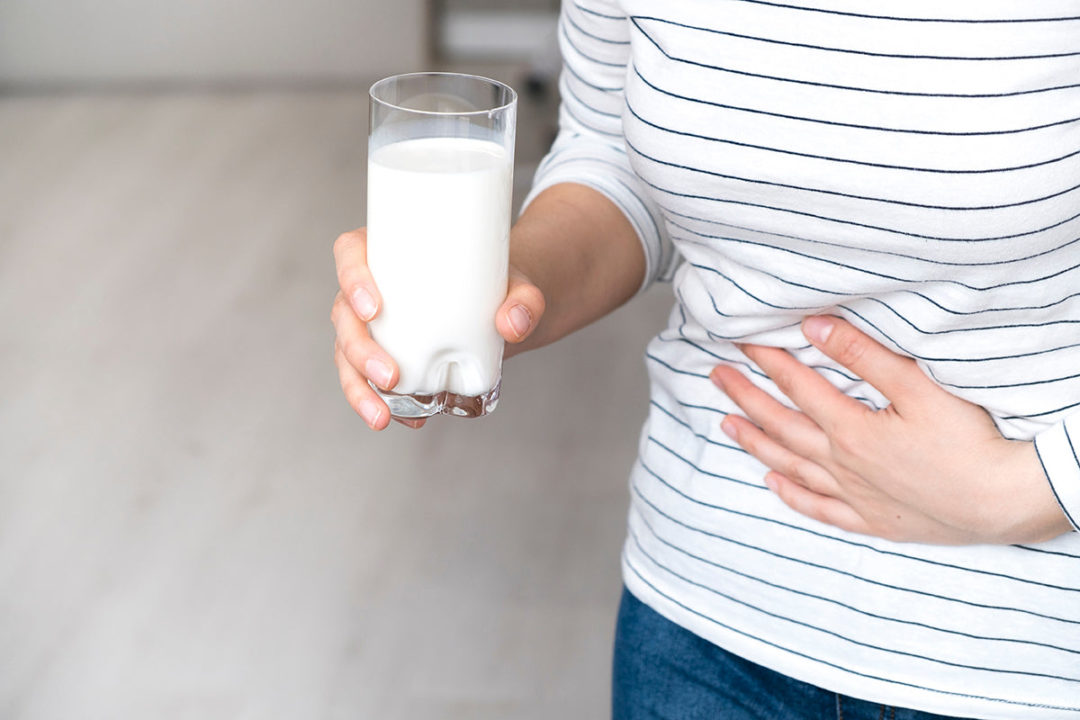Many of us have incorporated dairy products into our dietary plan, the protein, healthy fats and calcium are just some of its benefits. However, our bodies may lack the enzyme required for dairy sugar degradation, so we suffer certain symptoms.
If you have noticed gasses, abdominal pain, and discomfort in a way of cramps and diarrhea right after eating dairy, you may be lactose intolerant. This means that your body lacks the enzyme lactase, so the dairy is making you bloated and retaining water in the stool.
However, even if you have some mild discomfort, you may not be lactose intolerant. Many other causes can lead to such symptoms. To help you understand if you are being intolerant, we have prepared this article with some of the things you need to know about this condition. Of course, the best way is to get tested and know this for sure.
1. What happens when you ingest diary if you are being intolerant

Source: thelist.com
When dairy gets into our body, it begins with metabolism. Its sugars are called lactose and are metabolized with lactase enzyme. This was important for us when we were babies because of breastfeeding.
As we get older, some people’s bodies stop producing this enzyme. So, when lactose comes into our intestine, it goes through processes that cause the main symptoms. Since lactose is a sugar, because of the osmotic balance, it draws water which makes our stool watery. In addition, our intestines are full of bacteria that ferment these sugars. That leads to gasses and abdominal cramps.
2. Categories of intolerance
There are two main types of intolerance in humans. The first or the primary way is because our bodies stop producing the enzyme. This is usually genetic, so there is no cure for this condition. We can notice that by observing geographical affection. For example, around 70% of people in Asia lack this enzyme, while in Europe is less than 20%.
The secondary intolerance is because of inflammatory affection of the intestine. This leads to symptoms while you have the infection. As soon as you beat the inflammation process, the symptoms go away, and you are not intolerant anymore.
In addition, this condition can be inherited, and displayed in infants. This is usually a result of inheriting the same gene from both of the parents, and the child is unable to produce lactase. In case you notice something with your child, or you have this running in your family, make sure to notify your doctor.
3. How this condition manifests

Source: liverdoctor.com
As we have mentioned above, there are a couple of symptoms that indicate your intolerance. It begins from mild discomfort to symptoms that can be too overwhelming. Usually, they display in around half an hour after consuming dairy, and they gradually increase.
You can experience stomach pain, with bloating and cramps-like sensations. The previous symptoms can be followed by diarrhea that can cause dehydration. In addition, the symptoms may prograde to feeling nauseous or even vomiting.
4. Keep a journal
To understand if you have lactase insufficiency, you will need to journal where you will write everything you eat in detail, and then describe your symptoms. Make sure you mention the period when the symptoms begin, to differentiate the intolerance from allergies.
5. Go to a doctor

Source: trustcarehealth.com
With a well-written journal, explaining what you feel after a detailed meal will serve a great value when you visit a doctor. Although this is not a serious condition, it is always a great idea to visit a healthcare professional and sort out this situation properly.
If the doctor suspects lactase insufficiency, there is a food intolerance test if you click here that can be done to determine this correctly. Firstly, you will give a blood sample after consuming a meal full of lactose. The second test is through your breathing since the bacteria that ferment these sugars let off hydrogen that can be detected this way. Thirdly, your stool’s acidity can be measured for a complete diagnosis.
6. Avoid lactose products
The best way to prevent these symptoms and improve your lifestyle is by avoiding dairy diets. You will need to become more careful about your dietary habits since many products contain lactose that is hidden inside. For that reason, reading the information on the back of the package should be a part of your routine when shopping.
You can still continue eating portions of cheese or other dairy products. Just make sure you understand your threshold of how much you can withstand without any symptoms showing.
7. Find substitution products

Source: floridamilk.com
Many products offer high calcium and protein nutrition, so substitution is easily found. These things should be already discussed with your doctor, but it is always nice to have them for just in case. For example, instead of regular milk, you should go for the soy or almond option. That way, you are not ingesting any lactose products, but you are still able to cook your recipes the same.
Make sure that you get enough nutrition through other products. Keep a sufficient calcium intake, by eating enough greens, oranges, cereals, and other calcium-rich food. You should not forget about the D vitamin, since it has a significant role in calcium balance. Eat enough eggs, and expose yourself to the sun, normally after protecting your skin from harsh UV rays.
In case you are not able to keep up with the diet, you can always rely on external supplementation. There are various pills that can replenish your calcium and vitamin D needs, in the most reliable way. Make sure you discuss this with your doctor and find the best way to stay nourished while managing your life with this condition.
8. Get enzyme supplementation
If you still want to consume certain dairy products, you can use enzyme supplementation. This can be done with a simple intake of lactase or mixing it with the dairy to degrade it before you ingest it. Using this method is beneficial for situations where you cannot evade consuming milk. The best method of treatment still remains to avoid all of the dairy products and find alternatives.





No Comments